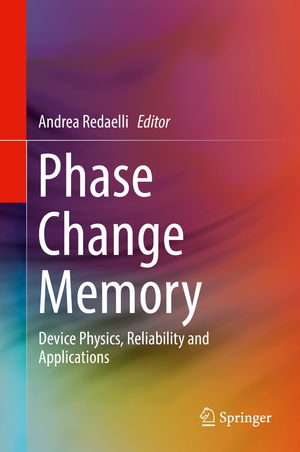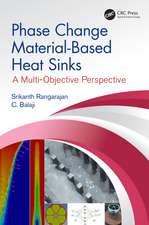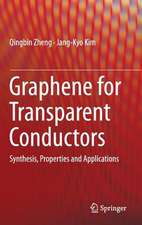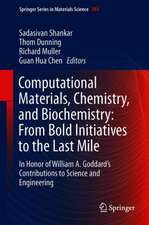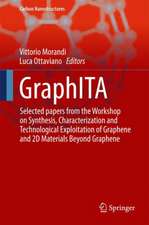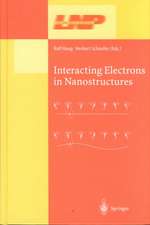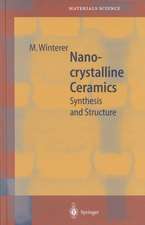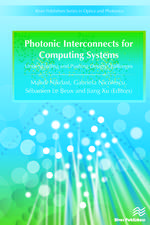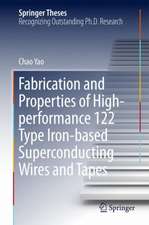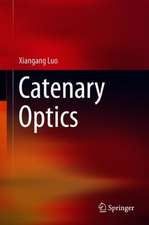Phase Change Memory: Device Physics, Reliability and Applications
Editat de Andrea Redaellien Limba Engleză Hardback – 28 noi 2017
| Toate formatele și edițiile | Preț | Express |
|---|---|---|
| Paperback (1) | 1039.62 lei 38-44 zile | |
| Springer International Publishing – 9 sep 2018 | 1039.62 lei 38-44 zile | |
| Hardback (1) | 1388.85 lei 43-57 zile | |
| Springer International Publishing – 28 noi 2017 | 1388.85 lei 43-57 zile |
Preț: 1388.85 lei
Preț vechi: 1693.71 lei
-18% Nou
Puncte Express: 2083
Preț estimativ în valută:
265.84€ • 288.86$ • 223.45£
265.84€ • 288.86$ • 223.45£
Carte tipărită la comandă
Livrare economică 21 aprilie-05 mai
Preluare comenzi: 021 569.72.76
Specificații
ISBN-13: 9783319690520
ISBN-10: 3319690523
Pagini: 348
Ilustrații: XVIII, 330 p. 220 illus., 196 illus. in color.
Dimensiuni: 155 x 235 mm
Greutate: 0.67 kg
Ediția:1st ed. 2018
Editura: Springer International Publishing
Colecția Springer
Locul publicării:Cham, Switzerland
ISBN-10: 3319690523
Pagini: 348
Ilustrații: XVIII, 330 p. 220 illus., 196 illus. in color.
Dimensiuni: 155 x 235 mm
Greutate: 0.67 kg
Ediția:1st ed. 2018
Editura: Springer International Publishing
Colecția Springer
Locul publicării:Cham, Switzerland
Cuprins
Chapter 1. Memory overview and PCM introduction.- Chapter 2.Electrical transport in crystalline and amorphous chalcogenides.- Chapter 3.Thermal model and remarkable temperature effects on calcogenide alloys.- Chapter 4.Self-consistent numerical model.- Chapter 5.PCM main reliability features.- Chapter 6.Structure and properties of chalcogenide materials for PCM.- Chapter 7.Material Engineering for PCM Device Optimization.- Chapter 8.PCM scaling.- Chapter 9.PCM device design.- Chapter 10.PCM array architecture and management.- Chapter 11. PCM applications and an outlook to the future.
Notă biografică
Andrea Redaelli received the Laurea and Ph.D. degrees in electronic engineering from the Politecnico di Milano, Italy, in 2003 and 2007 respectively. During the Ph.D., he worked on Phase Change Memories in the Department of Electrical and Electronic Engineering (Politecnico di Milano), collaborating with the Non-Volatile Memory Technology Development Group of STMicroelectronics, Agrate Brianza. From 2007, he joined STMicroelectronics working on advanced technologies for Non-Volatile memories. From 2008 to 2013 he worked as cell lead engineer on 45 and 26 nm PCM technology developments, firstly as a Numonyx employee and then joining Micron Technology. In the same years, Andrea cooperated with the Department of Electrical Engineering, Politecnico di Milano, in holding master’s classes on electronics and signal conditioning. His work areas included memory array architecture definition, design of test structures, process integration,cell operation modelling and cell electrical testing. He was also the coordinator of a European funded project under FP7 named PASTRY on low power PCM development. Since 2014 Andrea is working on 3DXpointTM technology, in charge of cell stack optimization and pathfinding activities. Andrea is author and co-author of more than 50 papers and about 70 patents and filed patent applications, resulting in a h-index of 21 according with google scholar.
Textul de pe ultima copertă
This book describes the physics of phase change memory devices, starting from basic operation to reliability issues. The book gives a comprehensive overlook of PCM with particular attention to the electrical transport and the phase transition physics between the two states. The book also contains design engineering details on PCM cell architecture, PCM cell arrays (including electrical circuit management), as well as the full spectrum of possible future applications.
Caracteristici
Includes a complete overview of the phase change memory technology and physics of its operation Details thermal models alongside crystallization kinetics models Covers key reliability features with an in-depth discussion of physical mechanisms that are currently limiting PCM capabilities Offers an overview of device architectures, array management and future applications
